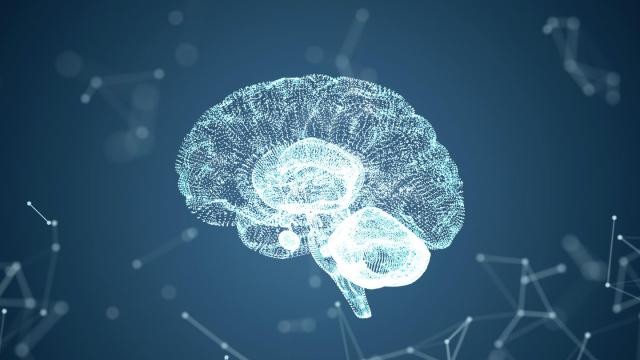Theory of canine mind: can dogs understand human intent?

Pixabay
- Theory of mind describes humans’ ability to attribute mental states to other people.
- Evidence suggests that some animals might possess limited forms of theory of mind, including apes, birds, and dogs.
- A new study suggests that dogs are able to tell the difference when someone withholds a treat unintentionally versus intentionally.
When you accidentally step on a dog’s tail, does she realize that it was an accident, or does she think that you were trying to hurt her?
The question centers on the difficult cognitive task of interpreting intentionality. Psychologists consider this task to be a key part of theory of mind, which is the ability to attribute mental states — intents, beliefs, desires, emotions, and knowledge — to other people.
Theory of mind was once considered an ability unique to humans. In the context of intentionality, you are using it when you find yourself asking questions like: Did that stranger intend not to hold the door open for me, or did he just not see me? Without other contextual clues, it is difficult to understand others’ intentions. After all, we cannot access other people’s minds. We can only conjure theories.
Despite the difficulty, a growing body of research suggests that some animals also possess some aspects of theory of mind. For example, ravens seeking to store food will adjust where they hide it if they recognize they are being watched by other birds. Studies also suggest that chimpanzees can accurately predict the behavior of other primates engaging in food-finding tasks.
Dogs and human intentionality
A recent study published in Scientific Reports explored the extent to which dogs are able to understand intentionality in humans.
Why dogs? The researchers wrote:
“The dog is probably the animal whose history and everyday life are most interwoven with that of humans. Having evolved in close proximity to humans, dogs have developed special skills for forming close social bonds with us. In this close relationship, they are confronted with different forms of human intentionality on a regular basis, for instance communicative intentions, when humans either intend or do not intend to communicate with them using certain behavioral and vocal cues.”
Dogs seem remarkably skilled at understanding human mental states. For example, studies have recorded how dogs steal food when they recognize people are not paying attention. They understand the concept of pointing better than other animals, even chimpanzees. (That is, if you point in a certain direction, a dog is more likely to look in that direction.) And they can distinguish when certain forms of human communication — like pointing or talking — are intended for them or someone else.
Unintentional versus intentional withholding
In the new study, the researchers examined dogs’ ability to differentiate between intentional and unintentional actions. The goal was to see whether dogs can tell when people are withholding treats intentionally versus unintentionally.
Each experiment involved a dog, a researcher with treats, and a glass partition with a gap in it that separated the two. The dogs — 51 in total, all pets — were individually taught that they were able to walk around the glass partition to the area where the researcher was sitting. The dogs were then trained that the researcher would pass them treats through the hole in the partition.
After getting the dogs used to this treat-through-the-window pattern, the researchers added new behaviors: withholding treats intentionally and “unintentionally.” Intentionally withheld meant that the researcher placed the treat in front of herself. For the unintentional conditions, the researcher either clumsily dropped the treat, or the partition was blocked to make it impossible to give the treat through the partition.
All three conditions were accompanied by vocalizations from the researcher: “oops!” when she dropped the treat, “oh!” when she was unable to pass it through the glass, and “ha-ha!” when she intentionally withheld the treat. For each condition, the researchers measured whether the dog chose to go around the glass partition to get the treat from the researcher, and if so, how long the dog waited to do so.
The results suggest that the dogs were able to distinguish between unintentional and intentional withholding.
“They waited significantly longer before approaching a reward that the experimenter had withheld intentionally than a reward that had not been administered due to human clumsiness or a physical obstacle,” the researchers wrote. “Thus, dogs were able to distinguish between the experimenter’s intentional and unintentional actions. This suggests that dogs may indeed be able to identify the experimenter’s intention-in-action.”
A true understanding of human intentionality?
Other observations supported this conclusion. For example, when the researchers intentionally withheld the treat, dogs tended to sit or lay down and stop wagging their tail. But does the ability to distinguish between the different test conditions in the experiment really mean that dogs understand human intentions?
It is not quite clear. After all, the dogs’ reactions might be influenced by behavioral cues from the researchers, such as their vocal cues or body language. Alternatively, the times when the researcher intentionally withheld the treats might have given the dog the idea that the treats belonged to the researcher, potentially discouraging the dog from pursuing the treats in subsequent trials.
One way to potentially settle the question would be to conduct the same experiment on other animals, like the undomesticated descendants of dogs.
“[I]t would be interesting to adapt this design to wolves,” the researchers wrote. “Assuming that dogs do understand human intentional action, it would be of high interest whether this capacity developed during domestication or whether it was a capacity that was already present in wolves and only had to be generalized to humans.”





